Yeah, about Hollywood…
It’s kind of funny, actually, since there is a positive spin, but I will come to that in time. My thanks today for the Intrawebz assisting me in finding the following visual devices to help tell my story. Hopefully my mistakes can be of use to you. I mean, you have to remember, The Innovator did that, so hopefully you won’t have to go through that…
Lesson #1 – If you try to be a hero, you risk looking foolish…
Just about everyone good thinks they will do better in general than they actual do. See Information Cascades. I think I can be forgiven for having high hopes for myself at this event.
The interesting thing to look at is that Tomoharu Saito, Gerry Thompson, Mark Herberholz, Alan Comer, Frank Karsten, and countless other name pros all did comparable to me. All are said to have had a bad tournament. I mean, everyone has bad tournaments sometimes. Kai went 0-4 drop at Worlds last year.
I cannot be sure that others are not experiencing this too, but I have countless emails, AIM messages from strangers, Facebook chats from friends of friends and so on, all asking me “what happened?”
“What happened?”
Is this real? I have half a dozen strangers a day messaging me asking me what happened? I appreciate all the support and concern, but am I really supposed to have the same conversation every other hour every day?
Fortunately for you, I am having that conversation here!
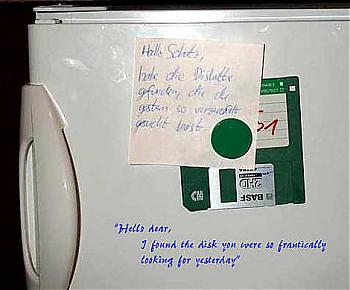
Lesson #2 – Trying to help can hurt.
You may think that this is in reference to everyone who has tried to “help” by messaging me over and over with:
HEY CHAPPIN. WUT HAPPINED N HOLLYWUD?
It actually isn’t. That was just a clever segue. I am actually talking about when I was so forceful in testing, insisting that Reveillark was the best strategy and that we needed to focus on it. BPM writes a fantastic piece on why this was here. I agree with him completely, as I am finding myself doing more and more. Watch this guy, I am telling you.
I realized that Reveillark was the best strategy as it inherently crushed every strategy except Blue aggro decks. Since the field should have more than twice as much “everything else” as Blue aggro, this is a great strategy.
I felt very strongly that Reveillark was where we should focus our energy, and as such tried to force this view into the front of every testing session. Even though in retrospect it is pretty clear Reveillark was the best, I think it caused a divide in playtesting.
Some of the people I tested with never got on board with Lark, and their involvement became somewhat removed. Others were on board, but without a fuller understanding of the format, we got hung up on a version of Lark that was not optimal for the field that actually showed up.
Aside
Brief facts on Faeries versus Lark:
107 Faeries decks Day 1 (27% of field)
31 Faeries decks Day 2 (21%) (29% advanced compared to 35% for all)
1 Faerie deck Day 3 (3.5%) (compared to 6% for all)
18 Reveillark decks Day 1 (4.9%)
8 Reveillark decks Day 2 (6%) (44% advanced compared to 35% for all)
2 Reveillark decks Day 3 (25%) (25% advanced compared to 6% for all)
Thanks to BPM for pointing out how at every step of the way Faeries did worse than the field, continually dropping in numbers and underperforming. Reveillark, on the other hand, continually increased in numbers and always performed better than predicted.
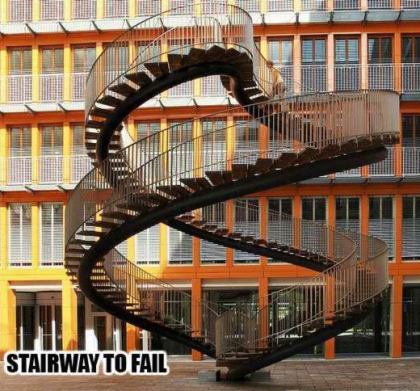
Lesson #3 – Focusing too much on beauty can cause one to overlook practicality.
I wanted to play Reveillark, but almost everyone said it was dead. As such, I adopted a defensive stance that made me brush off too much honest criticism. I also saw the beauty in my particular build’s design. People would tell me it was fatally flawed, but I saw beautiful things it could do and tried too hard to maintain that beauty instead of being content to enjoy functionality.
I realized Gargadon as a sac outlet even before I knew about Mirror Entity, and was interested in it throughout the testing process. However, some technology that I held onto, technology I should have been willing to let go, was the pair of Birds of Paradise and Primal Command.
Birds of Paradise and Primal Command are both very strong cards and would certainly lead to many wins. However, warping my manabase to support Green accelerators and switching my card drawers to five-mana sorceries was not the way to do what I needed to do for this event.
I suppose I should take a moment to show you what I played at the PT.
Creatures (28)
- 4 Birds of Paradise
- 4 Wall of Roots
- 3 Greater Gargadon
- 3 Body Double
- 4 Bonded Fetch
- 1 Mulldrifter
- 3 Reveillark
- 4 Fulminator Mage
- 2 Murderous Redcap
Lands (22)
Spells (10)

Lesson #4 – What good is technology if it doesn’t do what needs to be done?
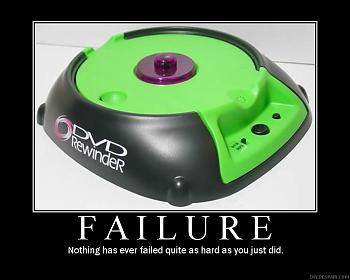
There were two fatal flaws to this design. One was that I was too married to Green. I was constantly on the defensive trying to promote Lark as a whole, so I unfortunately adopted a stance of defending certain basic pillars of design, such as the “innovation” of Green.
Green provides for explosive draws, but it leaves us open to creature elimination from the opponent, as well as providing terrible inconsistencies. Sometimes we just draw too much mana, sometimes we can’t cast the mana we do draw. On top of that, there is nothing quite like splashing Birds of Paradise…
I think my problem may have been that I was using Saffi for a while, so I forgot the original reason Green was used in the first place. Everyone is guilty of not thinking things through from time to time.
Lesson #5 – Think things through.
I kept holding up a sign that said we are playing Birds because we are Green, but I was overlooking the startling reality. We were actually playing Green because we were playing Birds.
Before I get into the connecting point about being able to let go of attachments, I need to cover the second fatal flaw of this build’s design.
The Faeries match-up for Reveillark has never been good. My build is no exception. However, I was put into a very difficult position for this event. I was told in no uncertain terms that if I couldn’t get it to beat Faeries, people weren’t going to play it.
This is very awkward, as Faeries is its worst matchup, not close.
In fact, other than Merfolk, that is just about its only bad matchup, period.
Still, I worked and worked to beat Faeries. Literally hundreds of games. And for what? Not only did the plan we produced only perform lukewarm at best against Faeries, it wasted eleven sideboard slots that could have been used to put closer matchups on lock.
What I should have done is simply agree to be very soft to Faeries. I used eleven slots, and for what? I am still below 50% match percentage against them, and that is being generous. Those eleven slots could have put the Elves, Doran, Merfolk, and so on, match-ups in the bag.
I was trying to guess how big Faeries would be versus the rest of the field. Speaking of which…
Lesson #6 – Appearances can be deceiving… (or “use common sense”)
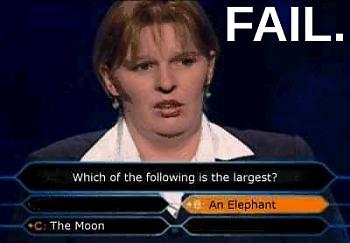
Even though I proclaimed that Faeries would only be around 25% of the field, I failed to really put this into perspective. If Faeries is 25% of the field, you are likely to only play it about four times in the swiss.
That means that out of 15 rounds actually played, you can actually go 1-3 against it and simply beat the rest of your opponents, which is exactly what Yong Han Choo did. Alternatively, you might get lucky and only play against it a couple of times, as Makihito Mihara did… though he actually beat both Faeries opponents, which is always an option.
So the question becomes can you actually go 11-0 or 10-1 against the rest of the field? There are many who would argue that it is easier to go 10-1 with Lark versus non-Fae opponents than it is to win with any other deck. I happen to agree with them, at least for Hollywood where all sights were set on Faeries instead of Lark.
Lesson #7 – Listen Well
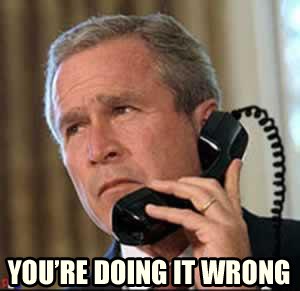
Mark Herberholz tried to tell me. Gabriel Nassif tried to tell me. Luis Scott-Vargas tried to tell me. Paul Cheon tried to tell me. Mike Jacob tried to tell me. Dave Williams tried to tell me.
Your deck loses to Faeries.
The thing is, I was listening wrong. Instead of being so fixated on trying to push the square peg through the round hole and make Lark beat Faeries, I should have just been willing to let that be a bad matchup and just hope for good pairings. Only eight people get to make Top 8. If we play a deck that beats everything but Faeries, and beats them well, then those are pretty good odds…
Mike Jacob in particular said something that I wish I had focused on:
“I am fine with scooping the Faeries match-up, if that is our plan.”
At that point, I thought we might just be able to live the impossible dream and beat Fae with Lark. However, if I had listened to him at that point, we could have had nice things like 4 Sower of Temptations that used to be in the sideboard. When people are telling you things, make sure you listen with your ears, not your mouth.
Lesson #8 – Lots of people can make the same mistake
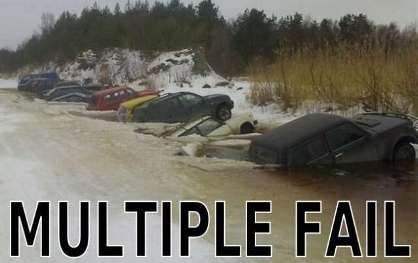
The sky is falling, the sky is falling!
How many times have we, as Magic players, heard this. Sure, once in a while you get a Rebels or an Affinity, but how many times has that happened?
Twice, actually. Maybe thrice… I am not sure how heavy U/G Madness was, but those are the only two or three decks that ever made up 40% of a field of a PT. That is not many in twelve years…
There were surely countless Monday morning Pro Tour Forecasters that retroactively remember saying that Faeries wasn’t all that, but I suggest you look at what people said before the Pro Tour.
Even if tons of random people say that everyone else is going to play Faeries, it doesn’t make it so. Tons of people said that R/G Mana Ramp was the best deck at Worlds last year…
I am hardly free of guilt in this case. Although I was very accurate regarding my prediction of Faeries’ appearance at the PT, I succumbed a little to The Fear that maybe, just maybe, 40% of the field would show up with Faeries and that the Fae decks would rise in the standings.
This leads me back to the wasted sideboard space, etc… I’m trying to avoid beating that dead swan (erm, horse). However, there’s another point to consider on the topic of lots of people making same mistake:
Just because most people think Lark can’t win the tournament doesn’t mean they are right.
I thought that combo was the best place to be positioned for this tournament, and that Lark was the strongest combo. I am glad I stuck to my guns, even if it didn’t work out for me this time. I would rather strike out twice and hit a home run once than have three solid but unspectacular finishes.
Magic payouts are top-heavy. Add up prize money for a 2nd place, an 88th place, and a 293rd place, versus a 13th place, a 26th place, and a 39th place. Game Theory FTW. Make risky choices and have faith in yourself even when you don’t get paid in the short run. Gambling is gambling. You aren’t always going to win.
Lesson #9 – Short term losses can lead to accomplishing goals long term.
When you make risky choices, such as playing Reveillark when Faeries is the most popular deck, you are definitely putting yourself at greater risk of not getting a safe and secure shot at a solid finish. However, if you don’t swing for the fences, you aren’t going to hit as many homeruns.
Do you think it is an accident that only one Faerie deck out of 107 made Top 8? Coincidence?
I failed when it came to finding the right build of Reveillark, no question. However, I have no regrets. There were only three or four builds at this PT. I am fairly sure I had at least a one-in-three or one-in-four shot of having the best build. What do I accomplish by second-guessing myself during preparation? It is good to continually challenge preconceived notions, but you must have faith in yourself.
I swung for the fences this time. I played a rogue build of combo whose worst match-up was the most popular deck by far. I ended up facing four bad match-ups on Day 1 and ended up 2-6 (and that was only because I got the bye in the last round).
I had my worst PT performance ever, but that is okay. You have to have it sometime.
What was my previous worst PT performance ever? PT: Rome.
I played CMU Academy, an identical 75 to Erik Lauer who made the Top 8, and took it to 2-5.
Maybe I am just bad at Magic, but I would like to think that I am just human and have off days like the next guy.
Lesson #10 – Failing at one mission does not mean you have failed at life
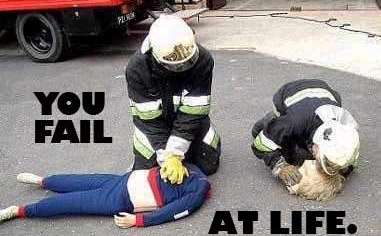
I didn’t get there this time. But I am not defeated. I am already back up in the saddle. Grand Prix: Indianapolis is in a few weeks, and I am excited for that. Nationals is not too far down the road, and you know I will be looking to wreck heads there.
I prepared more for PT: Hollywood than any other Pro Tour I’ve attended. And for what? My worst ever finish? Does this mean that I should never practice this much again?
No.
I have much to learn from this event, but that is surely not the lesson. There will be times in your competitive Magic life that you will prepare heavily for a PTQ, an FNM, Regionals, or a Pro Tour. Some of those times, you will lose.
You can’t win them all.
However, a loss is only a failure if you don’t learn from it.
This is the whole point of the article, so let me repeat it…
The Moral of the Story: A loss is only a failure if you don’t learn from it.
Don’t give up. You have to stay strong. You may take some bad beats, but if you learn from your mistakes, then every loss is an opportunity for growth.
Lesson #11 – Don’t Give Up
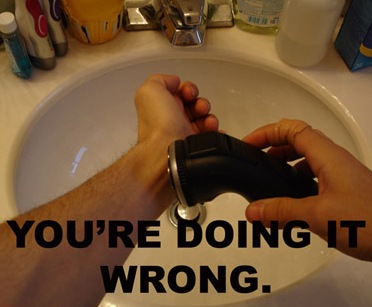
Next week, I think I will actually write a tournament report from Pro Tour: Hollywood. There were tons of great adventures, ranging from bars on the beach to rock concerts, from TV studios to The Mile High Club, from getting thrown out of the event site to team drafting with Evan Erwin, from Karaoke Bars in Korea Town at 4:30am to break dancing in the feature match area, from getting robbed by a cab driver to walking 5.6 miles to a KFC in 96 degree heat.
Seriously, tune in… you will want to catch this one. I might even talk about my matches. There is a little strategy that one might find interesting, plus things get kind of wild by the end. After round 5 people were buying me rounds between rounds…
Lesson #12 – Traffic in Los Angeles is the actual worst…

Thanks for all the kind words and support, especially to everyone who still has my back despite one bad tournament. You guys are the best. Also, thanks to everyone who came up and introduced themselves to me at the tournament. It is always a pleasure to meet readers at events.
See you Monday, usual day and time!
Patrick Chapin
“The Innovator”

